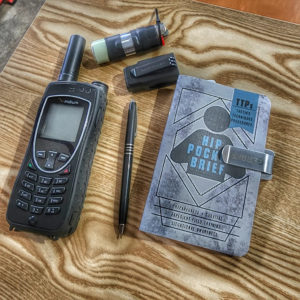Shared from the Hip Pocket Brief at hip.graymanbriefing.com
Triage Priority of Threats
(Hip Pocket Brief Vol 1:)
BRIEF: Routine travel and interactions require situational awareness and deduction IOT triage and prioritize potential threats.
》Known person: Someone you know to be both armed and dangerous deserves your immediate response as they would be the top threat. You may also know someone to be unarmed or to be a friendly. Your knowledge of others can help you prioritize them as a threat or a non-issue.
》Unknown Person: An unverified threat exists in all people until you can assess intent, opportunity & capability. A natural proxemic push (urge to move away from) should occur while you observe for non-verbal indicators such as eye-contact, hand reaching in pocket, and behavior outside of the baseline.
》Known Spaces: This is the location you occupy long enough to be able to make an assessment concerning surroundings, layout, and activity. It also applies to areas you have previously been able to recon, have knowledge of, or can readily observe before entering said space.
》Unknown Spaces: This is typically a new building, unfamiliar sidewalk/trail, a section of a structure that’s obscured, or anywhere that people/layout vary rapidly (train stations, wooden trails from season-to-season).
Shared from the Hip Pocket Brief at hip.graymanbriefing.com
Residential Counter Surveillance
(Hip Pocket Brief Vol 2)
BRIEF: Observe for signs that reveal your house or neighborhood are under surveillance. Know your neighbors and share information with them about suspicious activity and report it if necessary. Here are 6 cues that might mean you’re a target.
》Unfamiliar Vehicles: that park on the road side or repeatedly drive by on an irregular basis, or drivers that park then walk into neighboring areas. (Plumbing service vans, tinted window cars, or other vehicles that loiter may be suspicious.)
》Unknown persons in the area: pretending to be jogging, or are seen walking back and forth. (They often have a cover story such as being lost or viewing a house on the market. In reality the are surveilling for unlocked cars, open garages, or collecting intel about the area.)
》Requests for Help: by those that come to the door asking to use the bathroom or help finding their lost puppy. (Allowing them to enter your house gives them intel of the layout and valuables, being drawn from the house to help them find something permits an accomplice to raid your unattended property)
》Door-to-door Soliciting: sales pitches or charity visitations can be used as a cover for a fraud/scam or to collect additional intel about you or the security of your residence. (Coming to your door alerts a criminal to the presence of door cams, dogs in the house, lighting, etc. It gives them a peek inside the house and allows for questions to be asked that could result in you divulging your work schedule or how many people reside within.)
》Fliers and Handouts: are used as a justification to approach houses and gain information. (Actors scout potential targets by using the cover of a handout flier to approach your house to see if anyone is home or if you have a doorbell cam. Additionally, they can revisit the house the next day to see if the flier was removed to determine if you’re home or away.)
》Curious Markings: and signs placed on a mailbox/driveway/fence could be communication markers used by bad actors. (Professional burglars often mark potential targets while canvassing your neighborhood by using seemingly random symbols which signify meanings such as “valuables inside”, “works night shift”, or “no alarm system.”)
Shared from the Hip Pocket Brief at hip.graymanbriefing.com
PERSEC, PERSONAL SECURITY CONSIDERATIONS
(Hip Pocket Brief Vol 2)
BRIEF: PERSEC stands for personal security. The Grayman should be careful to not post personal information anywhere on the internet nor should they allow data to be captured through physical means.
Protect addresses, phone number, workplaces, political rally attendance, DOBs, account data, affiliations, travel dates, and PII etc.
》ONLINE
Post as if your profile is public and everyone will see it. Still, make sure your profile security settings are marked private or viewed by friends only. Nothing is 100% private but some simple information awareness can avoid making your data easily accessible. Check your location settings, confirm they are set to OFF. Doxxing, Blackmail, & Employment Background Checks often utilize OSINT social media data. Be especially cautious if your career is susceptible to public scrutiny or foreign surveillance (policing, IRS agent, military).
》TANGIBLE
Observables inside your house such as photos of your children, vacation planners, military boots under your bed, or a campaign sign in your front yard are all things that you may not want to be public knowledge. Be aware of what the “cable guy” or a prowler might see inside your house. Keep your phone/computer password protected and deter eavesdropping of your devices while in public. Keep your wallet in your front pocket and your purse secure to avoid pickpocketing/mugging as PII is contained within. Cover the keypad when at an ATM. Don’t hang dog tags from the rear view mirror as they display your SSN. Discarded documents w/ PII should be at a minimum, shredded and mixed with kitchen trash.
Shared from the Hip Pocket Brief at hip.graymanbriefing.com

